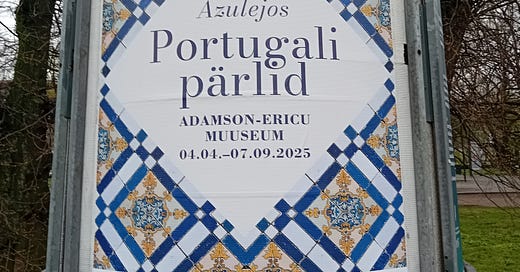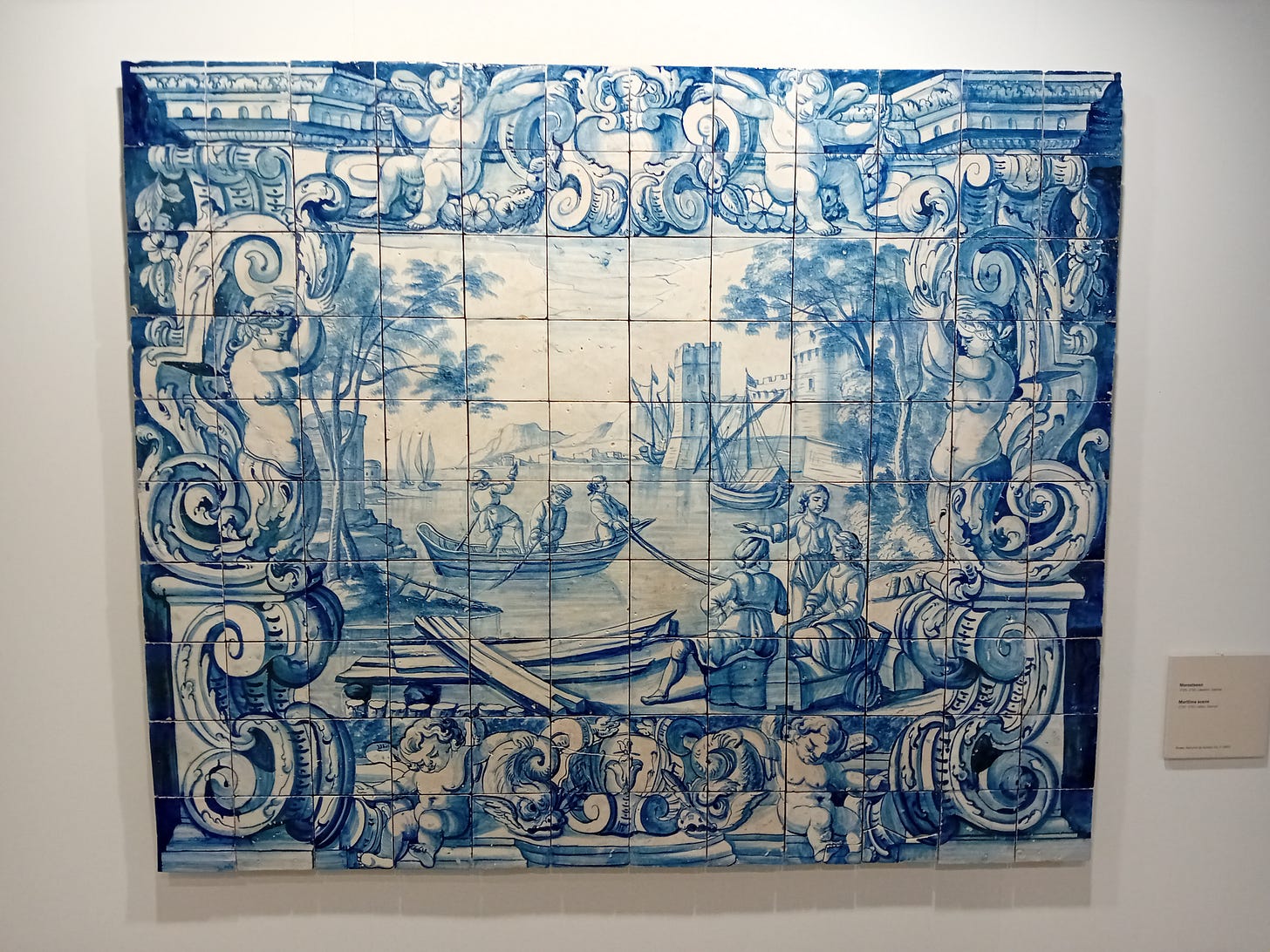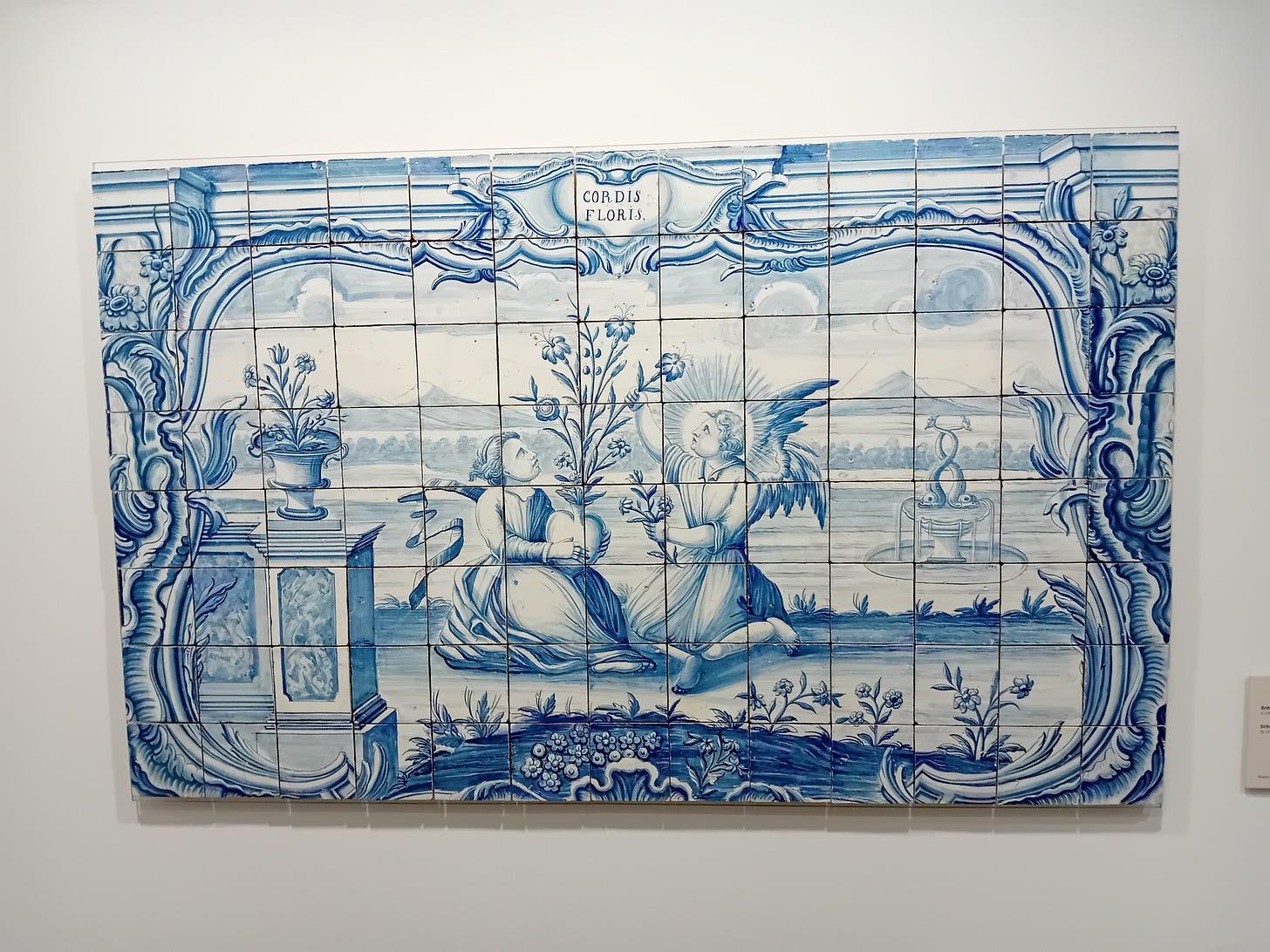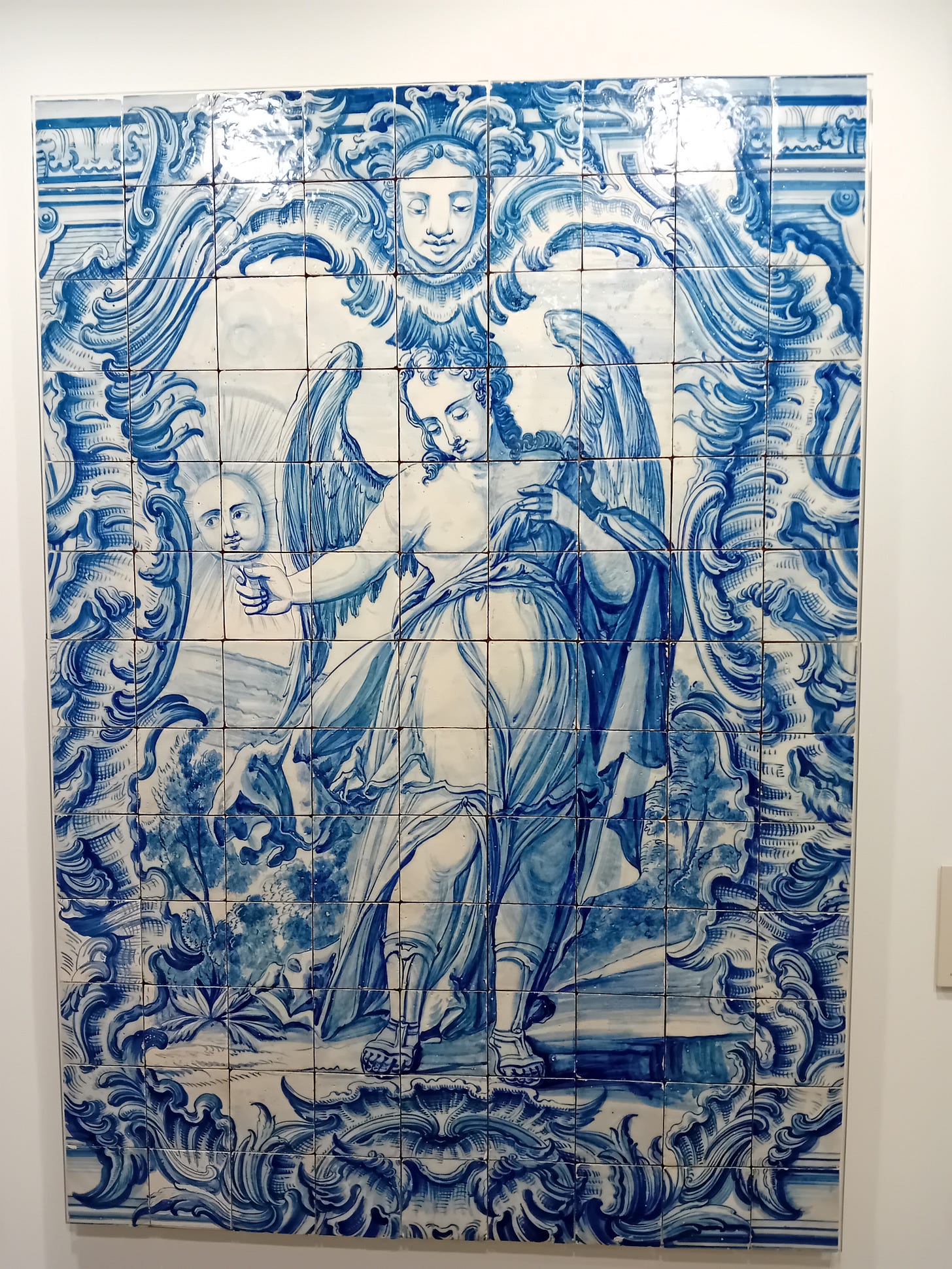A Journey Through Glazed Stories: Visiting the Azulejos Exhibition in Tallinn
Exhibition of azulejos
Welcome to Vintage Cafe.
This is my personal corner for sharing music, books, films, travel, and the stories that stay with me. Every post is written with care, like a letter to a friend. Think of it as a slow conversation over coffee.
This June marks three years of writing, reflecting, and connecting with kindred spirits. To celebrate, I’m offering 20% off for new paid subscribers — a small thank-you and an invitation to join the inner circle.
Paid subscribers get access to bonus posts, behind-the-scenes reflections, and deeper dives into the music and moments I don’t share anywhere else. Whether you're reading everything or just stopping by, I’m truly glad you’re here.
One of the exhibitions that caught my eye during my visit to Tallinn was the exhibition of Portuguese azulejos. Walking into the Adamson-Eric Museum on a grey Tallinn afternoon, I wasn’t sure what to expect. The cobbled Old Town streets were quiet, a little chilled by the wind off the Baltic, but inside the museum, warmth radiated not just from the heaters but from the colorful, sun-drenched world of Portuguese azulejos that awaited.
Titled Azulejos: The Pearls of Portugal, the exhibition at the Adamson-Eric Museum was organized in collaboration with the National Tile Museum (Museu Nacional do Azulejo) in Lisbon. It offered a thoughtfully curated overview of the evolution of these iconic ceramic tiles, tracing their journey from the early 17th century to the late 20th century.
What struck me first was the sheer variety. The exhibition spanned from the early 1600s to the late 20th century, and yet each tile panel felt like a standalone narrative, whether it was telling the story of saints and battles or just capturing the quiet dignity of daily life. One moment you're in a 17th-century church, admiring a solemn religious tableau, and the next you're faced with a playful modernist abstraction bursting with rhythm and color.
The name azulejo itself has Arabic roots, and the tiles' early history reveals a fascinating blend of Islamic geometry and Spanish-Moorish influences. The tradition of azulejos originated in Portugal in the early 16th century, deeply influenced by Islamic and Spanish-Moorish design. Over the centuries, these tiles evolved from luxury items in private interiors to iconic features of public architecture, covering churches, palaces, train stations, and residential buildings. Initially reserved for interiors and the wealthy, the tiles eventually moved outdoors in the 19th century, becoming both ornamental and functional as they decorated and protected Portugal’s homes, churches, train stations, and even metro tunnels. Their dual function—artistic and protective—has made them a defining feature of Portugal’s urban landscape.
Keep reading with a 7-day free trial
Subscribe to Vintage Cafe to keep reading this post and get 7 days of free access to the full post archives.








